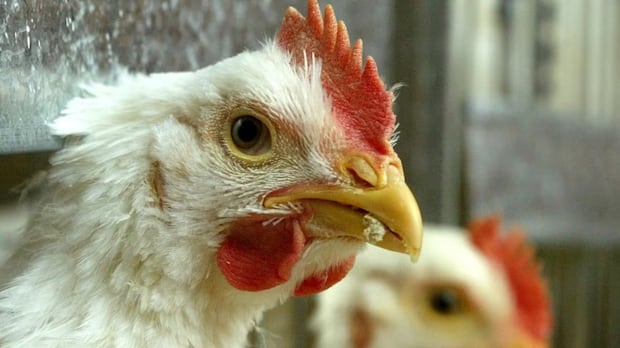Manitoba·NewThe Canadian Food Inspection Agency says avian influenza has been found in five commercial poultry flocks in Manitoba, the first cases detected since early May.Most cases since 2022, when virus was 1st detected in provinceDarren Bernhardt · CBC News · Posted: Oct 29, 2025 10:05 AM EDT | Last Updated: 21 minutes agoListen to this articleEstimated 3 minutesFive cases of avian influenza were discovered on Manitoba farms in October, the Canadian Food Inspection Agency says. (David Mdzinarishvili/Reuters)The Canadian Food Inspection Agency says avian influenza has been found in five commercial poultry flocks in Manitoba, the first cases detected since early May.The farms are now undergoing culls of their birds. The CFIA didn’t say how many are impacted or specify the type of poultry infected.Chickens are the most common type raised, but poultry also includes turkeys, geese and ducks.Avian influenza (also known as bird flu) is highly pathogenic in birds and can cause severe illness and death. It circulates naturally in wild birds and waterfowl, and is spread by migratory birds, the CFIA said.All five Manitoba cases were discovered in October, with the first on Oct. 9 on a farm just south of Ste. Rose du Lac, a town about 210 kilometres northwest of Winnipeg, says a report posted online by the CFIA.The second case was reported the following day in the rural municipality of Bifrost-Riverton, in the Interlake close to Washow Bay, about 140 km north of Winnipeg.The next three — Oct. 16, 21 and 25 — were all in the rural municipality of Hanover, southeast of Winnipeg. Two are in an area between Blumenort and Steinbach, and the third is closer to New Bothwell.A spokesperson for the RM of Hanover said the municipality hasn’t been given any details about where the virus was found.The CFIA said the farms will remain under restrictions until cleaning and disinfection is complete. That will be followed by a 14-day “vacancy period” in which domestic birds cannot be reintroduced to the farm.Owners can apply for compensation for the animals that have been ordered destroyed.There is a subtype of avian influenza, H5N1, that mainly infects birds but has been identified in other animals and has caused “rare and sporadic” infections in humans, the CFIA says.While the risk in humans remains relatively low, Canada’s first human case of H5N1 was detected in a teenager in British Columbia in November 2024.Human cases are typically found in those who have close contact with infected animals, such as farm workers.Bird flu was first detected in Canada in December 2021, in wild birds in Newfoundland and Labrador. Since then, it has since been detected in wild birds and poultry in all Canadian jurisdictions.The first cases in Manitoba were confirmed in a commercial poultry flock and in wild birds in April 2022.That year, there were 21 cases detected, four in wild birds and 17 on commercial farms.Biosecurity measures to prevent exposure to flocks and monitoring sick wild birds have helped reduce the number of cases since then, the CFIA said.Manitoba had two cases in November 2023, one in November 2024 and two in May 2025 before the spike this month.”Every year is different but the risk of avian influenza for domestic poultry increases during the fall and spring migration of wild birds,” the CFIA said in an email to CBC News.”The continued detection of avian flu in both wild and domestic birds in Canada are a strong reminder for anyone raising birds to remain vigilant … and ensure they have effective biosecurity measures in place.”ABOUT THE AUTHORDarren Bernhardt has been with CBC Manitoba since 2009 and specializes in offbeat and local history stories. He is the author of two bestselling books: The Lesser Known: A History of Oddities from the Heart of the Continent, and Prairie Oddities: Punkinhead, Peculiar Gravity and More Lesser Known Histories.
Wednesday, 17 Dec 2025
Canada – The Illusion
Search
Have an existing account?
Sign In
© 2022 Foxiz News Network. Ruby Design Company. All Rights Reserved.
You May also Like
- More News:
- history
- Standing Bear Network
- John Gonzalez
- ᐊᔭᐦᑊ ayahp — It happened
- Creation
- Beneath the Water
- Olympic gold medal
- Jim Thorpe
- type O blood
- the bringer of life
- Raven
- Wás’agi
- NoiseCat
- 'Sugarcane'
- The rivers still sing
- ᑲᓂᐸᐏᐟ ᒪᐢᑿ
- ᐅᑳᐤ okâw — We remember
- ᐊᓂᓈᐯᐃᐧᐣ aninâpêwin — Truth
- This is what it means to be human.
- Nokoma











